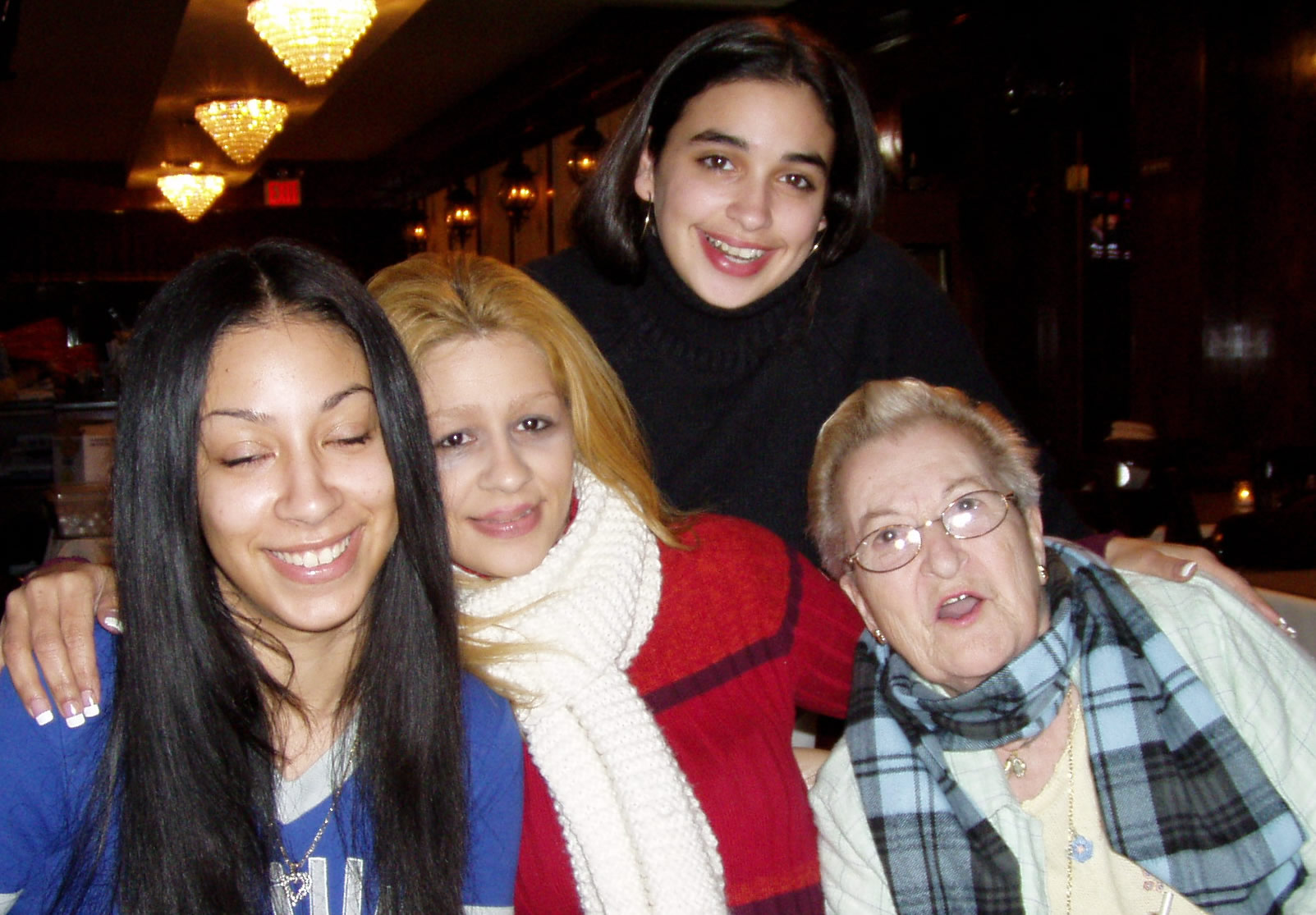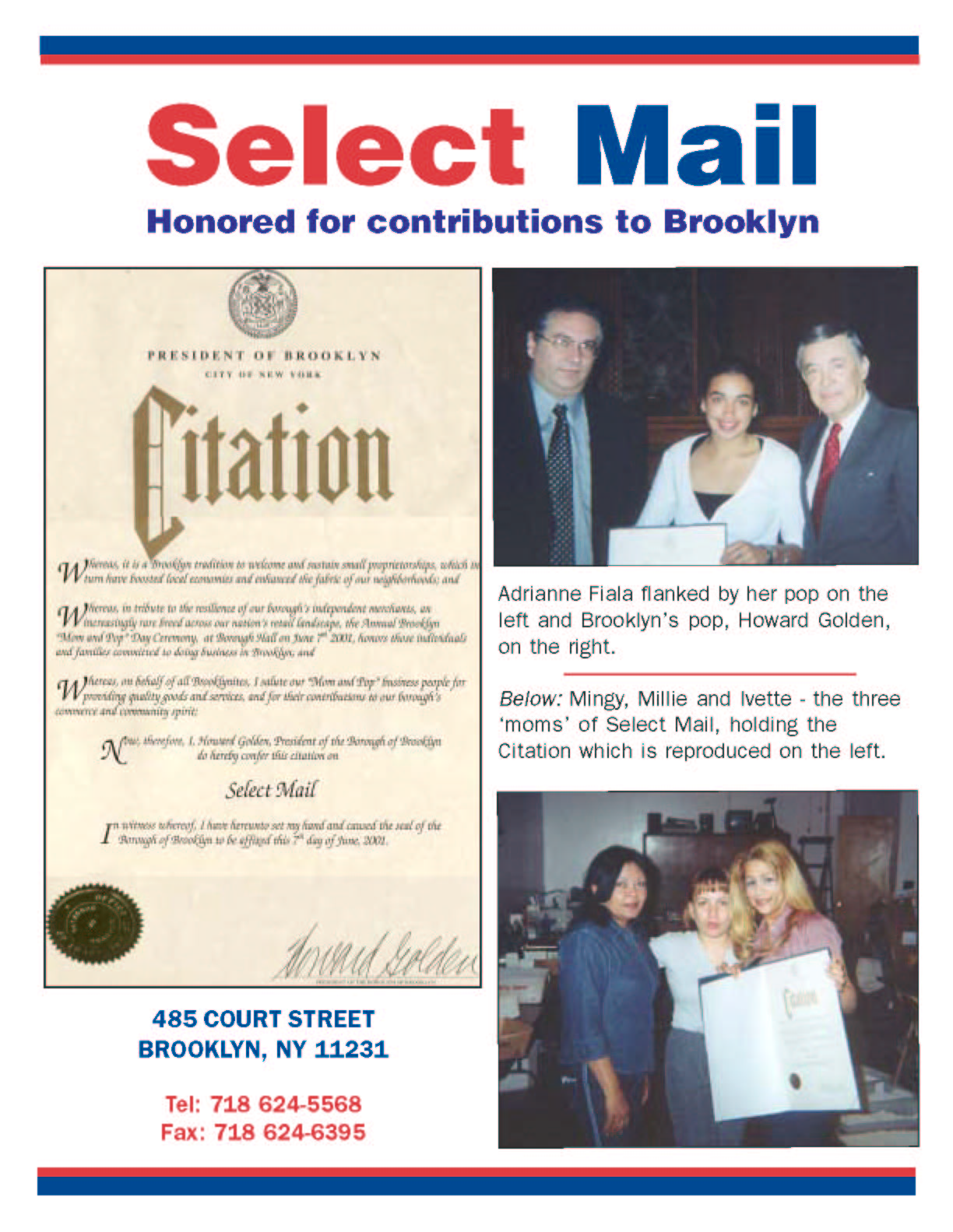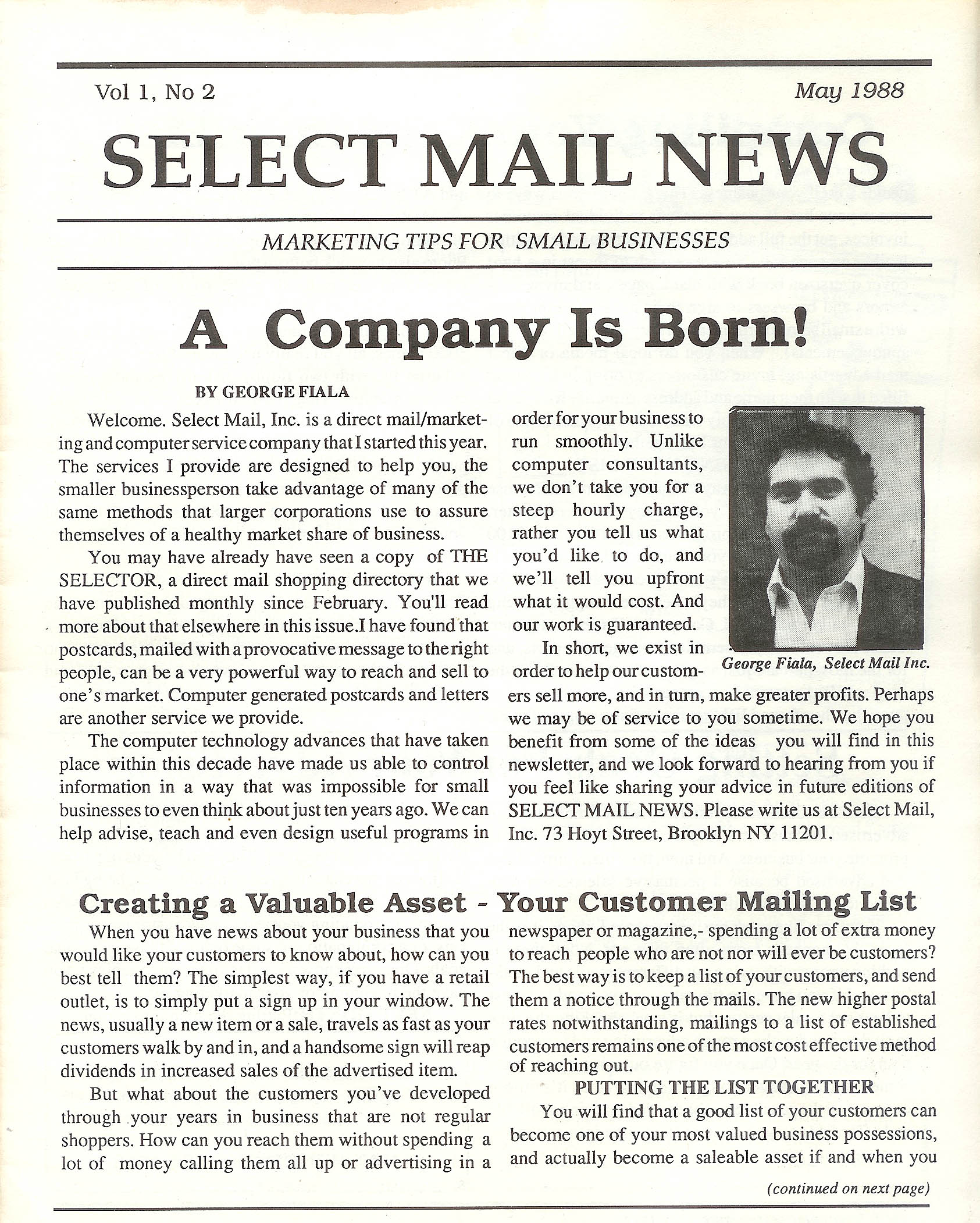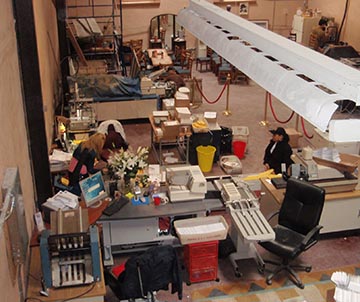|

Select Mail
481 Van Brunt Street
Brooklyn, NY 11231
Tel: 718-624-5568
email : gbrook@pipeline.com
click to email
|
The Story of Select Mail
   
Select Mail was incorporated in 1986 when I rented my first
office from Nat
Hendricks at 73 Hoyt Street, around the corner from my place of full-time
employment at the time, The Phoenix Newspaper, at the corner of Atlantic and
Bond Streets in Boerum Hill,
Brooklyn, time and place memorialized by Jonathan Lethem in
his book Motherless Brooklyn. We hired his father Dick, who knew carpentry as
well as painting, to move our entrance from the middle of the building (395)
to the side.
Nat Hendricks was one of the real estate pioneers who along with my
boss, Mike Armstrong, and others including fellow local real
estate mogul William Harris and Brooklyn Union Gas man helped build up
downtown Brooklyn from the SRO community it had become during the 1960’s
to the vibrant and upscale communities of today. Other local pioneers
and newspaper friends included writer LJ
Davis, local politico Ruby Nottage, whose daughter Lynne, now a well-known
playwright, was a bright-eyed and talented intern for us. Among the reporters
who started their careers with us in those days are Michael Tomasky, now
editor of The American Prospect, Michael Powell, NY Times metropolitan reporter Charles Bagli and award winning feature writer Tracy
Garrity. Oh and of course I shouldn't forget Jeannette Walls, who was very young but obviously very talented and went on to a career at New York Magazine, Esquire and MSNBC and has written an incredible memoir which has just been featured on the cover of the New York Times Book Review!
1979 - The Dawn of the Personal Computer
The early 1980’s was an exciting time to be in downtown Brooklyn
and also in the world of technology. The newspaper business
is highly data intensive. We had over 10,000 subscribers to
keep track of, not to mention hundreds of advertisers, which
meant generating tons of bills as well as bills to pay. Among
the zillions of responsibilities I had as general manager of
this prize-winning and over-reaching enterprise was keeping
track of the nascent personal computer industry. To give you
an idea of the changes that were happening back then, in 1979
I went with my boss to a demonstration of IBM’s
computer offerings to small businesses, which that year was their mini-computer.
We told them what we needed, and their proposal to us was $100,000 in hardware
and $100,000 in custom software. What we ended up doing was in 1982 getting
an IBM-PC, with an add-on 10 megabyte hard drive, an Okidata 84 line printer,
a copy of Wordstar and a copy ot dBase for less than $10,000; and me taking
the summer off to learn database programming (from a book called Everyman’s
database Primer, by Robert A Byers, which used a model of liquor store).
After my first 2 big software projects, which was computerizing the circulation
system and creating an accounting package (no such thing as Quickbooks yet
existed), I was asked if it was possible to create and maintain a database
of potential advertisers. Then I was asked could we code them as to the type
of business they are. Then I was asked could we send them personalized letters
to go along with our flyers soliciting ads for special sections that we were
planning. Of course, I don’t really mean 'was I asked' what it was really
was that I was commanded to figure out how to do it. Today such a project
is built into all the basic software programs and with our Pentium computers
and gigabytes of memory it is routine sport. But back 20 years, we had these
tasks to perform with a computer that was an order of things slower and smaller
and yet it was amazing that a small business could actually have any computing
power at all. What was asked was doable, and I taught myself to create letter
quality mail merged letters on a dot matrix printers. We had stationery pre-printed
on ivory paper with the traction freed on the margins that had to be bursted,
and laboriously prepared these mailings. The reaction was almost instantaneous.
Instead of getting ads from just the regulars who we would visit the week
before a special issue and cajole an ad in person ñ we had ad agencies calling
us to place reservations, and our advertising income leaped for the first
time in years. This was on top of the literally thousands of subscription
checks that stuffed our mailbox ever since we were now efficiently billing
for them. Those were glory years for the Phoenix, we prepared huge 72 page
issues on occasion of the 100 yeaar anniversary of the Brooklyn Bridge, on
the Brownstone Fairs and on NY Harbor Festival. I saw with my own eyes how
an effective mailing program could bring a business to a new plateau. We
had business Brooklyn talking about how advanced we were with our individualized
marketing campaigns.
1986 - The Birth of Select Mail
When I had my first sign made I called it Select Mail, Computer Public Relations
and Marketing. But by 1988, which is when I finally cut my ties with
The Phoenix and devoted all my time to Select Mail, the cat was out of the
bag. Newer, more powerful computers were on corporate desktops, and mail-merged
letters were being created by secretaries all over the country. However,
I soon found out that most people were not interested in dealing with the
Post Office, and were willing to pay to have their bulk mailings taken care
of so that they never had to deal with the people at the weigh office at
Cadman Plaza. So I soon found myself lugging mail sacks from Hoyt Street
down Adams Street down to the PO which was right before the Brooklyn Bridge.
I still remember thinking that one day I wouldn’t have to save cab fare by
lugging the bags myself, and of course persistence has paid off as now we
are big enough to have a driver make daily trips to the main Brooklyn PO
which has since moved over to Forbell Street in a facility closer to Kennedy
Airport.
My first mailing customer was a jazz club in Greenwich Village called Bradleys.
I have always been a big music fan, and my first marketing campaign was to
music clubs that advertised in the Village Voice. It was a good feeling to
be creating databases for use by my own company, but maybe not so good falling
behind in the rent for my own company. So I plugged away and slowly grew
a business. Other early jobs included creating a menu for a small diner that
opened up a block away, and designing a software system for a friend of mine
who owned a coffee business also in the Village (I managed the Villager, another local paper owned by
Armstrong, before coming to Brooklyn in ’82). I kept plugging away with my
own promotional material, and one day, a day seemingly like any other, I
get a telephone call from St Francis College, requesting a quote for mailing
their alumni magazine, The Terrier. I immediately stopped everything else
I was working on and in my finest business letter style, mapped out a proposal
and hand delivered it that afternoon. St. Francis College became my first
real mailing customer, and over the years I have done many more things for
them then simply mailing the magazine. It is a relationship that continues
to this day.
When I think of the early years of Select Mail, I think fondly of May 22,
1990. On that date Microsoft released Windows 3.0. For me 1990 doesn’t seem
that long ago, but in fact desktop computers were hundreds of times slower
than todays, didn’t have an internet to connect to, didn’t store and play
thousands of record albums, didn’t pay your bills or check your bank balance
or your overdue library books. Long distance phone calls were charged by
the minute, you had to go to a travel agent to plan a decent vacation, and
four color printing still involved advanced graphic art skills.
In any case, the importance of Windows 3 for me was that I became immensely
more productive. I was able to do my typesetting in about half the time without
having to upgrade my computer. Windows 3 was a software advance that finally
allowed the true potential of the 386 processor to be used. I could double
my output and my income without any capital expense, and in addition benefited
psychically because I didn’t have to curse the computer as much.
1993 - Select Mail Moves and Grows
We were able to handle more work, and eventually we moved from our somewhat
off-the-beaten track office at the corner of Hoyt and State Streets in Boerum
Hill, over to bustling Flatbush Avenue and Livingston Street. I had become
the main typesetter for the Savemor
Copy Center and their owner and my friend Bart Tesoriero invited to move
in with them as they expanded their office from their original second floor
location above Horace Bullards Chicken shack on Flatbush and Fulton to their
present large street level store down the street. I spent the next 5 years
continuing to expand the business, moving heavily into the resume business
but slowly gathering in more mailing customers.
However, the process started seeming too slow for me. I had been in business
over five years and still wasn’t taking home too much of a paycheck, and
my workweek still averaged over 60 hours. I decided that for the first time
I was going to take a risk and spend borrowed money on a local advertising
campaign. Up until then, my marketing was via occasional postcards that I
mailed out, and briefly, a business newspaper that I published. This
time, I took $5,000 to the Brooklyn Paper and planned
out a years worth of ads. When I used to sell newspaper ads myself, I remembered
that it was not entirely the results of the ad that made people buy them,
it was also the fact of seeing your business in print. Well, now being on
the other end I could see what they meant. I was so proud to see my first
few ads appearing in print. However, the goal was to improve the business
financially as well.
While I must admit to only getting one new customer directly from the year
of quarter page ads (and their check bounced so it was really like losing
money), the advertising campaign was a great success for other reasons ñ two
reasons mostly. The first happened one day when someone came in holding the
ad looking for me. He represented a local real estate company that had a
mailing machine they were looking to sell. Up until this point we had done
all our mailings by hand, sticking peel-off labels onto the letters and cards
and sorting them in zip order for the Post Office. I had heard that this
process could be automated of course, but I assumed that a mailing machine
was something that was way out of my price range. I actually had never considered
a used machine, and this gentleman was offering me their used one for $2000,
which they agreed to split up into 2 payments. I asked to see it and the
next day two men came in with this pretty big machine. They hooked it up
to my computer and lo and behold, addresses were being printed directly onto
envelopes! While I was a little hesitant because I knew that I really didn’t
know anything about mailing machines, I gave them a check for $1000 with
the promise of another one and I now was a proud owner of an automatic mailing
machine.
1997 - We Go from Peel & Stick to the Modern Age of Inkjet
Of course, the machine only worked for one job. Try as might, I couldn’t
get it to print any more. While I had developed a lot of knowledge about
personal computers, I had virtually no knowledge when it came to these machines.
In fact, they are so specialized that what most people do are to lease them
and pay for a monthly service contract. When I worked at the Phoenix we had
a three typesetting machines (in those days you needed a special machine
to set type, unlike today when everybody reading this can set their own type)
that we bought used and without any service contract. We were lucky in that
we knew of someone who had formerly worked for the typesetting company and
was freelancing as a repairman for those machines. So I knew that it might
be possible to find someone to fix my mailing machine. I went to the phone
book (these were the days before Google) and started calling other mailing
companies to ask whether they had such a person. I lucked out with the first
called and was given the name and number of a Mr. John Flores.
The next day I was at work on my computer when I was told that a Mr. Flores
was at the counter to see me. He was a short, muscular guy with an abrupt
manner and he asked to see the broken machine. He took a quick look and told
me that it was junk. " Nobody uses this anymore, you can find them in the
garbage, not worth anything." I couldn’t believe my ears! I was having a
fantasy of not having to peel and stick labels anymore. But then he went
on to say that he had something in the car that would be good for my business.
As he went out to get whatever it was he had, I mulled over my suspicions
that he was simply being a salesperson rather than a repairman in not wanting
to fix the machine I had already paid $1,000 for. But he had patiently showed
me why my model wouldn’t work ñ it was made by a German company and relied
on a striking mechanism, and the newer models were all inkjet machines using
ink, not a typrewriter ribbon. Everything he told me made sense and so I
decided right then and there to trust this guy. The machine he brought in
was a used early inkjet model, it worked and he guaranteed it for a year,
and he would take monthly payments. I was in business and I had a trusted
mechanic who still sells and fixes machines for me to this day.
The other big, big change in my business that the Brooklyn Paper was responsible
for was also not a response from an ad, but a recommendation from the paper’s
publisher, Celia Weintraub. Actually, back then I think she was still the
advertising manager, but having married the owner Ed, whom I had known as
a friendly competitor to the Phoenix, she got the promotion. In any case,
it turned out that one of their big advertisers, Eastern Athletic Clubs was
not happy with their current mailing house and Celia recommended us. We got
a call from them right around the time we got our new machine, but the quantities
of postcards that they had asked for were larger then we had been used to
doing, and I was worried that I would not do a good job on the mailing, as
in addition to it being the biggest job we had yet to undertake, it was needed
on an extremely rushed basis. In order to do a good job, I would have had
to research printers, mailing list companies and made sure that the new machine
would handle such a big job. These were all kind of new things to me but
I was experienced enough in business to know that if we didn’t do a good
job the first time, there would probably not be a second chance.
There was one more tool in my toolshed. I had already committed to hire
someone to help me with customer relations, but she couldn’t start until
her notice was up at her previous job, which was in January. So with confidence
I told this to Eastern Athletic ñ that I wasn’t confident of doing this first
job correctly and in a rush, and that the first call of the new person would
be to them.
Everything ended up working out wonderfully. The new machine worked well,
and when there was a problem John Flores showed up right away to fix it.
The new staffer did a great job with Eastern Athletic, and they are a happy
customer to this day. So while I didn’t actually get any business directly
from a full year of quarter page ads in the Brooklyn Paper, if not for that
contract I would probably be in some other business today.
1999 - We Move to Our Present Location on Court Street
The space that we occupied on Flatbush Avenue was pretty cramped, and when
I decided to hire someone to help with sales and marketing, I realized that
she would need to have an office of her own. At the time I was living in
Windsor Terrace, in kind of a slummy building. My apartment was on the first
floor rear, and my landlord (someone who had recently bought the multi-unit
apartment building) used to come to my office to pick up the rent (I guess
he needed it badly). One day he showed up and I mentioned to him that I was
looking around for office space. He asked if the space I was looking for
could be a studio apartment. It turned out that the apartment next to mine
was available, and for $500 a month we made a deal. Theresa was to start
in January and I rented the apartment starting in December. Of course, I
had no idea how to properly attire an office at that point, since all I knew
were ramshackle type spaces more utilitarian than showy.
My inclination was to paint the walls and find some used office furniture
and set up the office spending as little money as possible. As I say, that
is what I was used to, from my days at the alternative weekly newspaper,
Pennsylvania’s Lancaster Independent Press, to the offices of the Villager
and the Brooklyn Phoenix, where the height of modernity was a 1938 Underwood
typewriter and most of the office furniture came from garbage dumspers. Of
course, the important thing was the product, so the newspapers all came out
looking spiffy, that’s where we spent the money. However, I didn’t realize
that the underlying problem in all these ventures, lack of advertising, may
have had something to do with the impression we made in person, from the
offices where people sometimes showed up to pay their bills, or the salespeople
we hired, who were usually the kinds of people who had difficulty matching
their socks.
In any case, I was saved from repeating the pattern by my good friend Peter
Longo, proprietor of Porto Rico Coffee and Tea on Bleecker Street in the
Village. I happened to chat with him on the phone one day and mentioned that
I was about to paint this new office. Peter right away said the he would
help, and we arranged to meet one evening that week to paint.
I think when he showed up I had jerry-rigged a board between a couple of
low file cabinets, which was to be the desk. While we were painting, Peter,
who had met Theresa earlier, gently told me that I was hiring someone who
was used to working in finished office spaces, and arranged for us to take
a trip together to the Ikea by Newark Airport. We walked through the
store until we got to the office section. I started looking at desks and
cabinets, trying to see what I could get for a few hundered bucks. Peter
found a seat by a mahogany colored desk and watched me look around. Finally
he pointed to the wrap-around desk that he happened to be sitting at and
said that I should get this one, telling me that it was ësexy’. Well, the
price was over $700 and spending that much on furniture was a new concept
for me, but I guess the word sexy won me over. It so happens that it turned
out to be a great move. Theresa made the sale to Eastern Athletic, a client
that is loyal to me through this day, as is the desk, which happens to be
holding up the computer that I am sitting at at this very moment.
2005 - Rocking and rolling during the real estate bubble
What happened with that office somewhat mirrored things in my personal life
up to that point. Whereas I thought that we made a beautiful office, Theresa’s
first response was bewilderment at having to work in such squalor. Nonetheless,
work progressed and as one thing led to another, we ended up moving the whole
operation to Court Street where Select Mail maintains its happy home through
the present. We have steadily grown, adding machinery sold and maintained
by our good friend John Flores, Ivette, who began working for us back in
the Save Mor years is now the production manager and runs the machines and
alerts me to any error, and Manny, who had been driving part time for me
since the early 1990’s, is now our main driver, machine operator as well,
and also he’s the one who paints, plasters and renovates for us — that painting
party with Peter was my last — Manny is a professional as we’ve gone from
squalor to chic.
2010 - A whole new thing at 101 Union Street
|